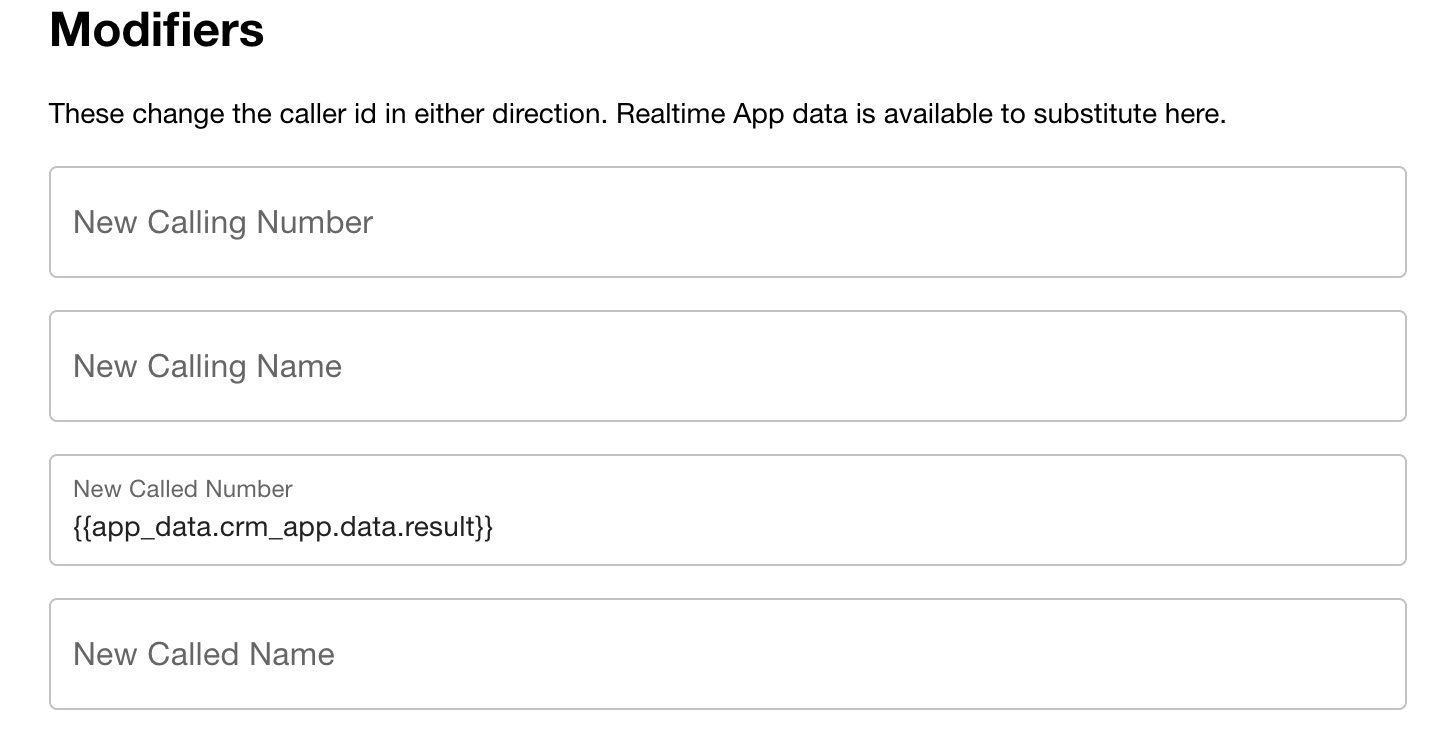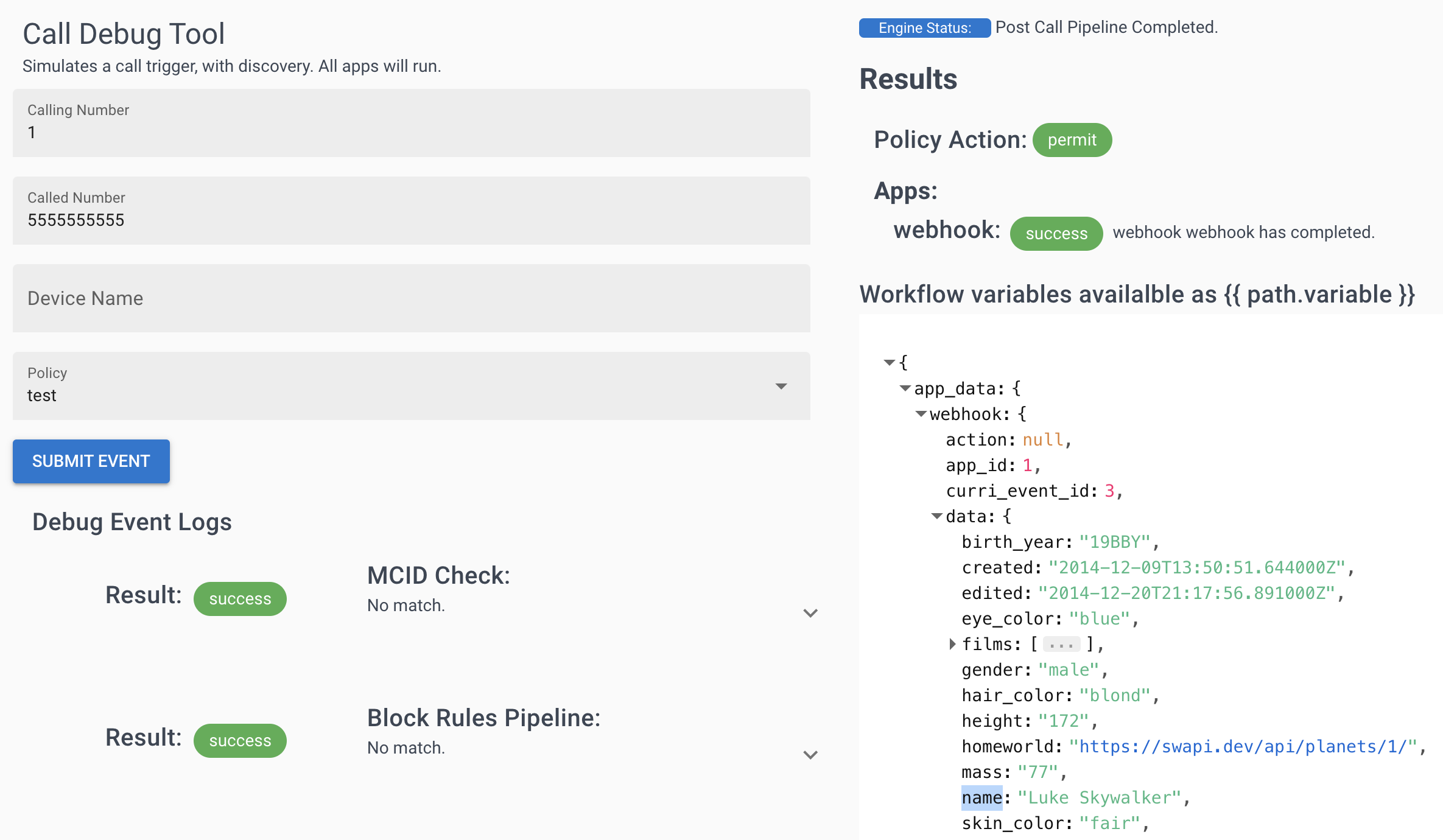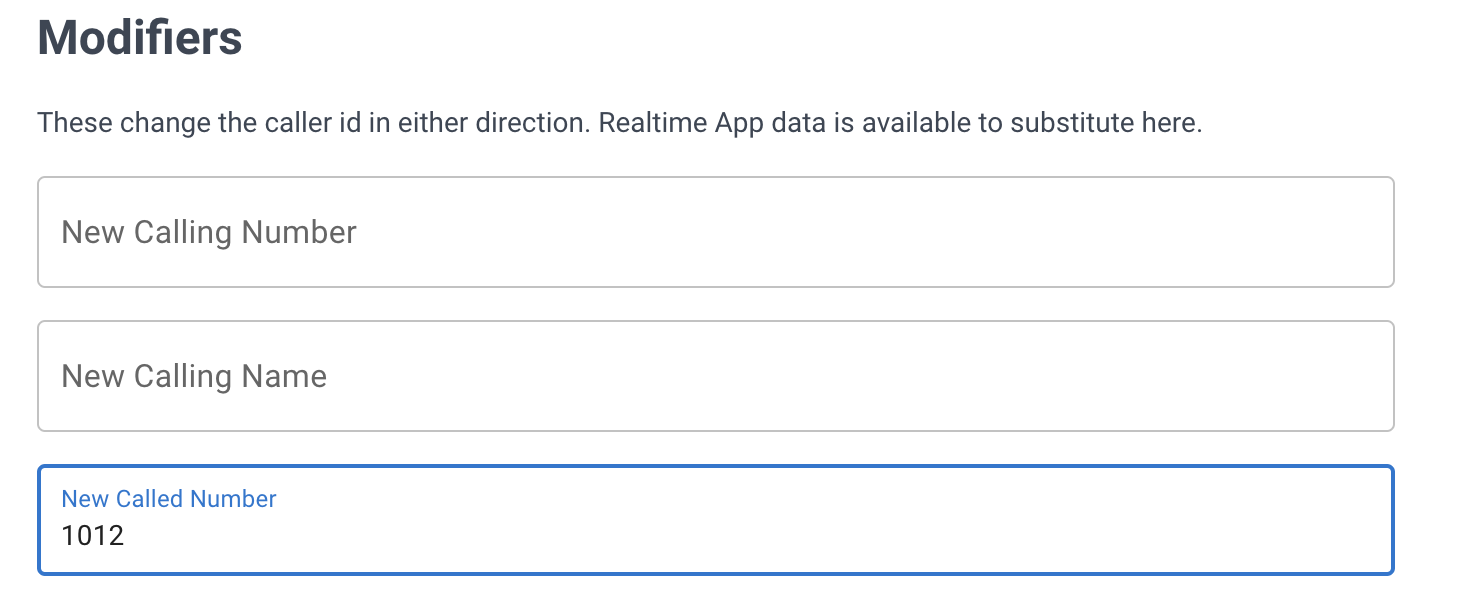Appearance
Dynamic Caller ID and Called Number in Realtime
Feature Overview
Modifiers within rules can change callflow with flexible matching and API integrations. These rules can change the calling or called number before the call is routed to it's original destination.
There are two ways to use modifiers:
- Static Modifiers - Static values within rules applies to calling or called data
- Dynamic Modifiers - You can use Call Telemetry Apps lookup data from APIs like a webhook CRM or Spam Robocall Score API, and change call data dynamically in realtime.
Comparing modifiers to Cisco Translation and Transformation rules
Rules can reroute based on Called Party or Calling Party matches, without changing any Partitions or Calling Search Spaces, just by using a policy on the pattern or device. That's not possible with standard Cisco Callmanager Transformation and Translation Patterns.
Feature Requirements
- Call Telemetry Appliance 0.7.0 or later
- Call Telemetry Community or Higher License
- Cisco Callmanager 8.5 with CURRI Integration to Call Telemetry
- Configured Active Call Policy Inspection - A route pattern, translation pattern, or phone extension must be enabled for Call Telemetry Policy inspection.
- Note that a new CSS will used to route the new call - the CSS of the CURRI / ECC profile will be used to route the new call.
Dynamic Caller ID and CRM Integrations
These fields can be changed with modifiers. They will change the Caller ID Name and Number shown to the called party.
Call Modifier Fields
- Field: New Calling Number - Caller ID shown to the called party
- Field: New Calling Name - Calling Party Name shown to the called party
- Field: New Called Name - Caller Name shown to the calling party
Caller ID Name lookup via API or Database
You can leverage your own Caller ID lookup by integrating Call Telemetry Apps to create a CRM lookup without coding or other customer CRM integration for Cisco Callmanager.
For example, you can use the Webhook App to query a CRM API for the caller's name, and replace the caller's name with your CRM name returned from the API.
Here is an example screenshot from the Rules page showing a dynamic workflow variable used:

Here's an example of data that can be returned from a sample API - in this example it is the Star Wars API. They don't have phones in space, but they have queriable IDs - and that's all it takes to get a name.
Visit our Webhook CRM App Guide for a full walkthrough of how to use the Webhook App as a CRM Connector with Cisco Callmanager.
Example screenshot showing webhook data in the Call Test results page:

Using Call Telemetry as a CRM Connector for Cisco Callmanager
PostgreSQL CRM App
You can query any PostgreSQL instance for a caller's name. This example queries a student database for the caller's name. We have a video demonstrating the entire setup and integration of this app PostgreSQL App YouTube Video
Webhook CRM App
You can use the Webhook APP to query any JSON CRM API for caller's name, and substitute it as a name or number for your caller ID. The above link is an example querying the Star Wars API as our CRM.
Called Party Static Destinations - Route the call to a new destination
You can use this feature to route calls to a new destination based on a match. This is similar to a Callmanager Translation Pattern, but without the need to change any partitions or calling search spaces.
Translate New Called Number by static entry
Enter a new number in this field, and Call Telemetry will request that the call be routed to this new number.
Here is an example routing a call to a new destination of 1012 within a rule.

Called Party Dynamic Destinations
You can also route the call to a new destination based on a Call App lookup
You can use this feature to route calls to a new destination based on a lookup to a CRM or other API. This is similar to a Callmanager Translation Pattern, but without the need to change any partitions or calling search spaces.
Some examples of dynamic translation use cases:
- On-call scheduling routing via API to specific team members
- CRM lookup for routing to team members
